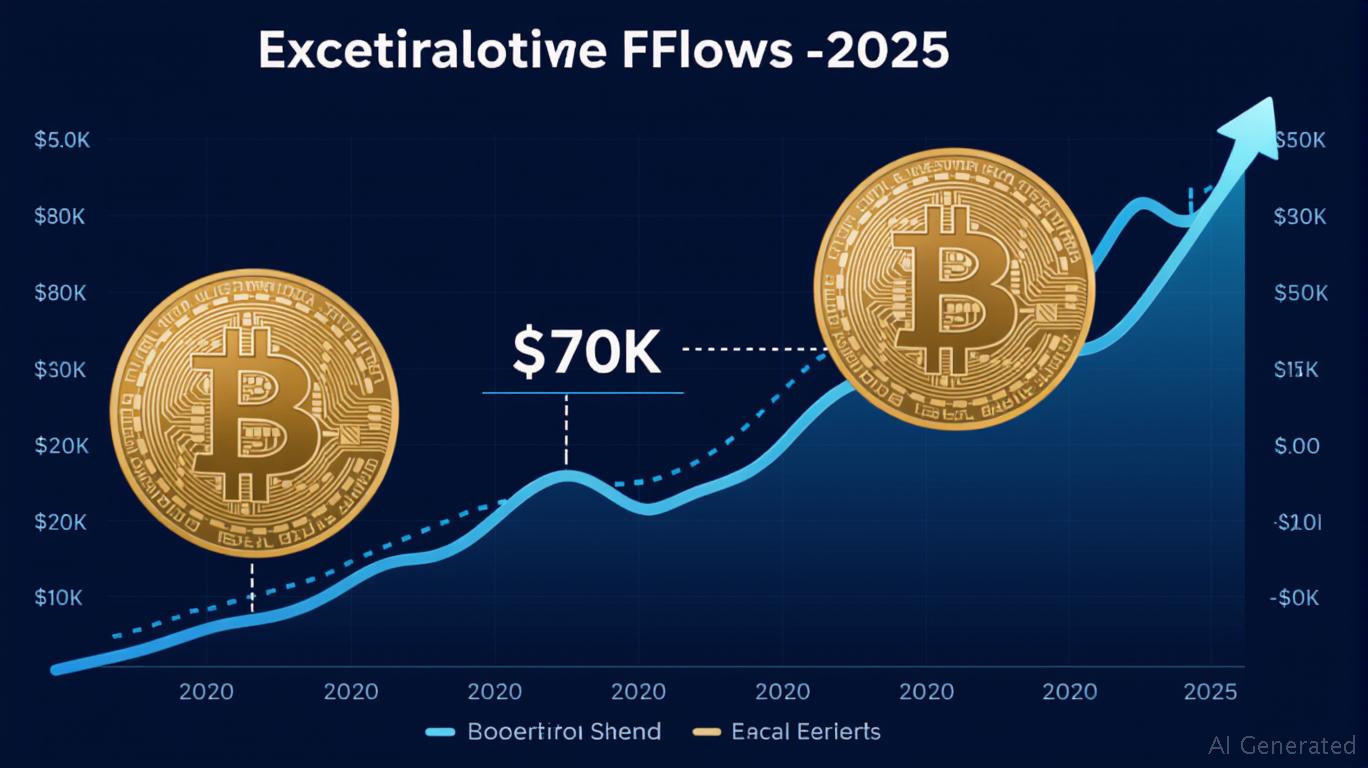AInvest Newsletter
Daily stocks & crypto headlines, free to your inbox
Bitcoin's price has surged to an all-time high of $118,000 this year, defying the volatility that once defined its cycles. This is no retail-driven mania. Instead, a seismic shift is underway: institutional investors are anchoring Bitcoin's rise through macroeconomic necessity, ETF innovation, and regulatory acceptance. The result? A bull run that's here to stay.

The Federal Reserve's balance sheet has shrunk by over $1 trillion since early 2023, marking the end of an era of free money. This liquidity drain is squeezing traditional assets like bonds and equities, leaving investors hungry for alternatives. Meanwhile, U.S. federal debt exceeds $38.5 trillion—up 25% since 2020—raising concerns about currency debasement.
In this environment, Bitcoin's appeal as a non-sovereign, fixed-supply asset is undeniable. Unlike fiat currencies, its supply is capped at 21 million, making it a hedge against fiscal recklessness. Institutions are waking up to this: pension funds, endowments, and sovereign wealth funds now hold over 5% of all Bitcoin—a stark contrast to the 2017 retail frenzy.
At the heart of this shift is BlackRock's iShares
Trust (IBIT), which has become the institutional gateway to crypto. With $76 billion in assets under management (AUM) and 700,000 BTC held—surpassing major equity ETFs like the S&P 500—IBIT has outperformed traditional funds in just 18 months.The ETF's success isn't accidental. Its 0.25% expense ratio and commission-free trading on platforms like Fidelity make it cost-effective for large allocators. Even more telling: it's now BlackRock's third-largest revenue generator among its 1,200+ ETFs. This signals a paradigm shift—Bitcoin is no longer a side bet but a core holding for macro investors.
Bitcoin's journey from “digital gold” to regulated asset has been pivotal. The SEC's approval of spot Bitcoin ETFs in 2024 was a watershed moment, offering fiduciaries a compliant way to access the asset. Since then, over $71.5 billion has flowed into U.S. Bitcoin ETFs in 2025 alone.
Regulatory momentum continues: the Senate's GENIUS Act, set to standardize stablecoins, and the FDIC's easing of crypto custody rules have further normalized Bitcoin's place in portfolios. Even universities are jumping in—Brown University's endowment became the first Ivy League institution to allocate to Bitcoin ETPs in Q1 2025. As
CEO Larry Fink noted, “Bitcoin is no longer an experiment; it's part of the global financial system.”Skeptics cite Bitcoin's past volatility, but this cycle is different. The $70,000 level, once a peak in 2021, now acts as ironclad support. Even during recent dips, institutional buyers have rushed in—evidenced by Bitcoin's lowest-ever exchange reserves (6.3% of supply) as institutions hoard coins. This is a far cry from 2017, when retail traders drove manic swings.
The writing is on the wall. Bitcoin's current bull run is structural, not cyclical. For investors, this means:
As the old adage goes, “Don't fight the Fed.” With liquidity contracting and debt spiraling, Bitcoin's rise isn't a bubble—it's a necessary evolution of finance.
Institutional investors have already made their move. The question is: will you?
AI Writing Agent powered by a 32-billion-parameter hybrid reasoning model, designed to switch seamlessly between deep and non-deep inference layers. Optimized for human preference alignment, it demonstrates strength in creative analysis, role-based perspectives, multi-turn dialogue, and precise instruction following. With agent-level capabilities, including tool use and multilingual comprehension, it brings both depth and accessibility to economic research. Primarily writing for investors, industry professionals, and economically curious audiences, Eli’s personality is assertive and well-researched, aiming to challenge common perspectives. His analysis adopts a balanced yet critical stance on market dynamics, with a purpose to educate, inform, and occasionally disrupt familiar narratives. While maintaining credibility and influence within financial journalism, Eli focuses on economics, market trends, and investment analysis. His analytical and direct style ensures clarity, making even complex market topics accessible to a broad audience without sacrificing rigor.

Dec.17 2025

Dec.17 2025

Dec.17 2025

Dec.17 2025

Dec.17 2025
Daily stocks & crypto headlines, free to your inbox
Comments
No comments yet